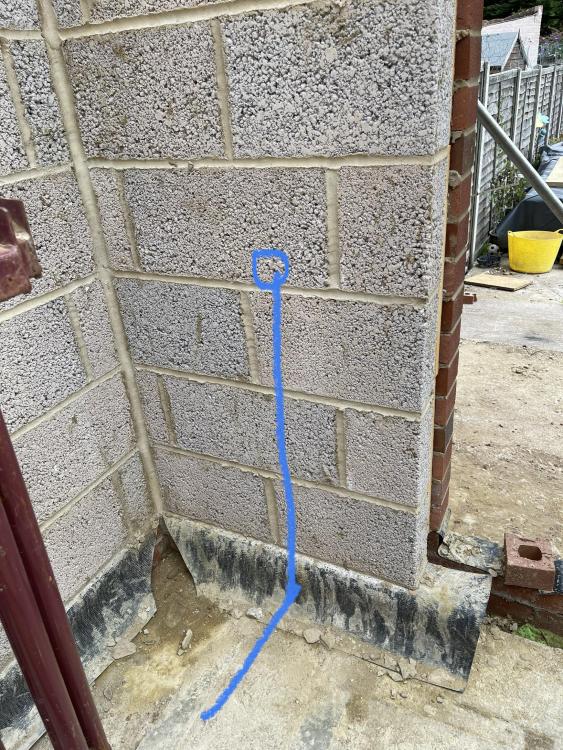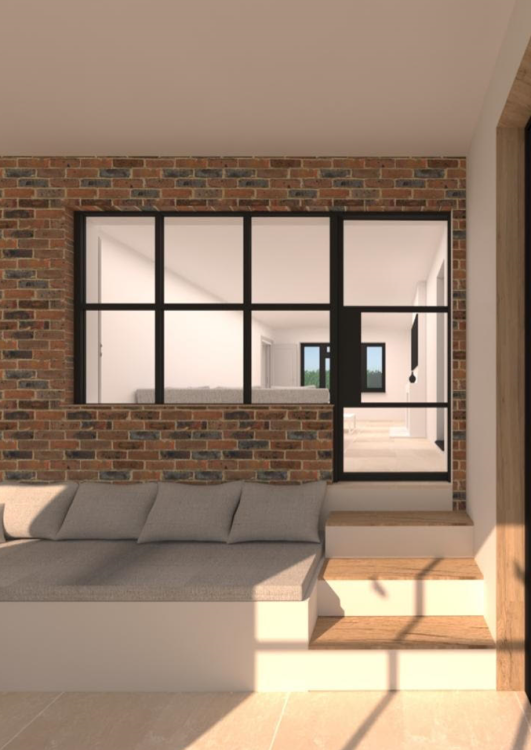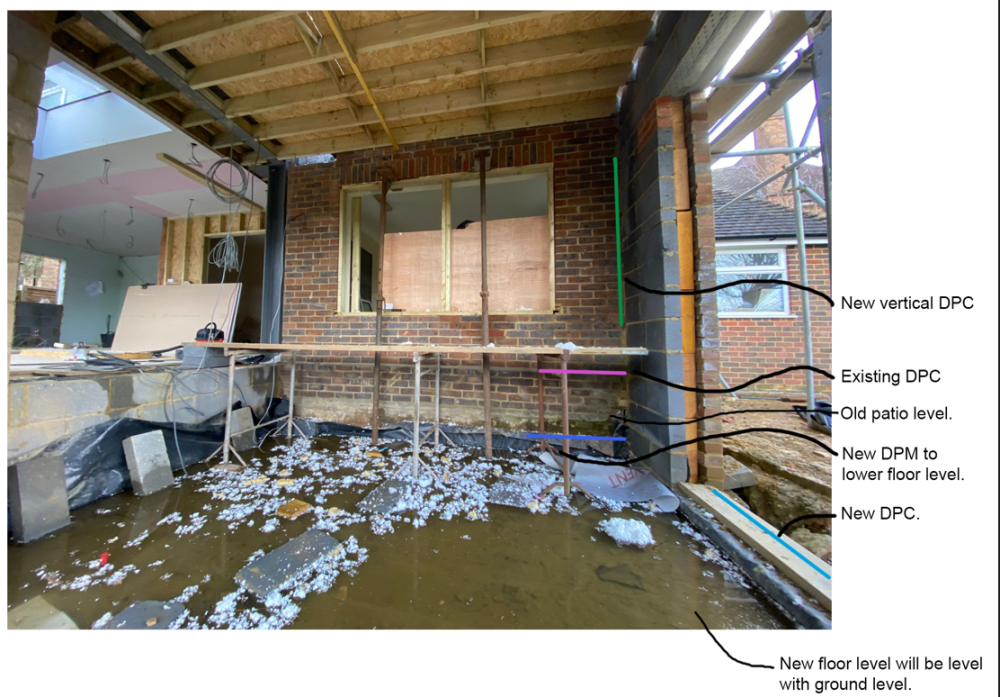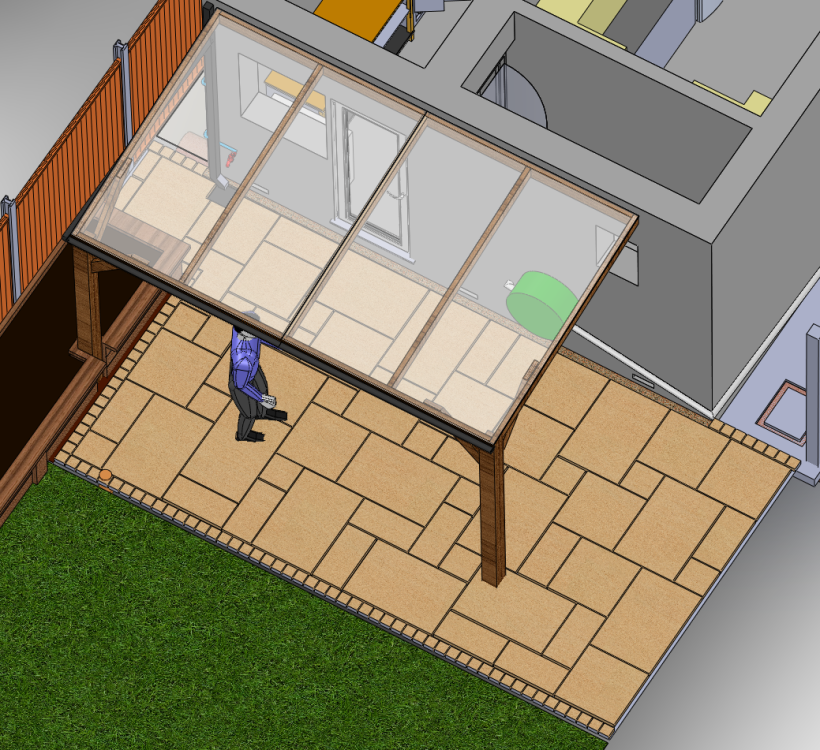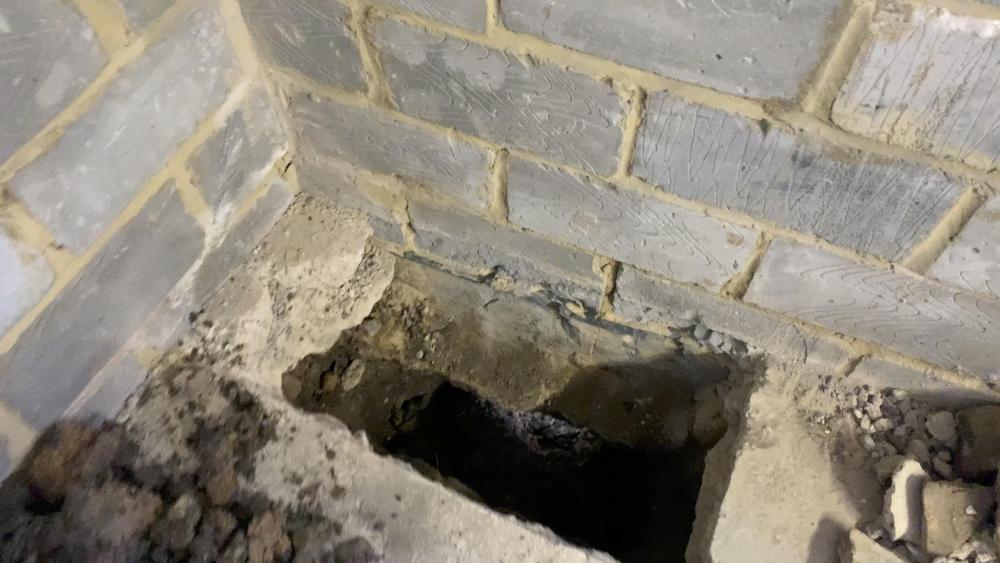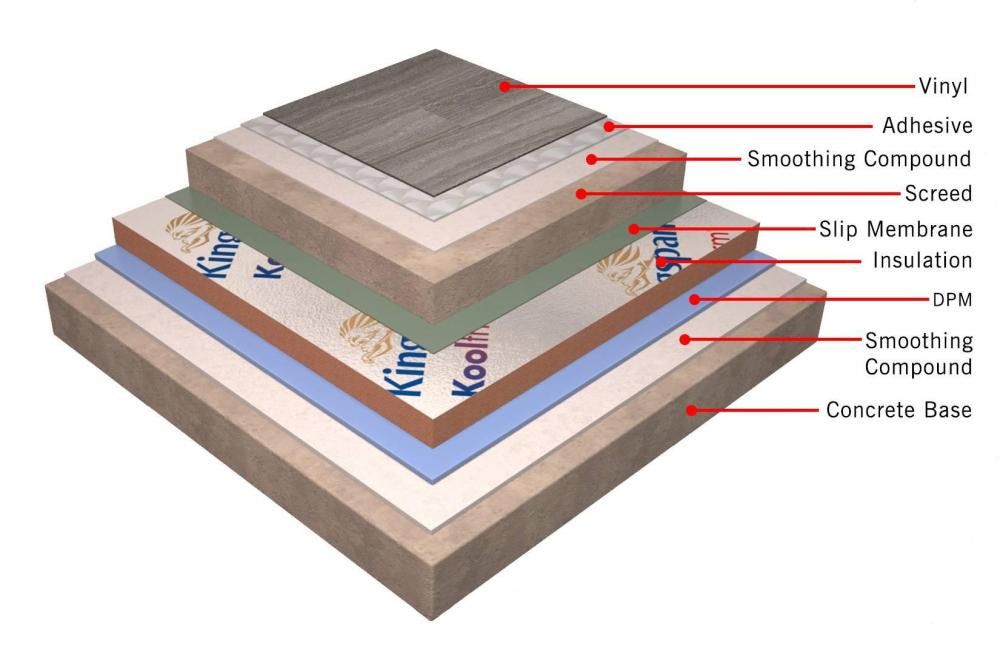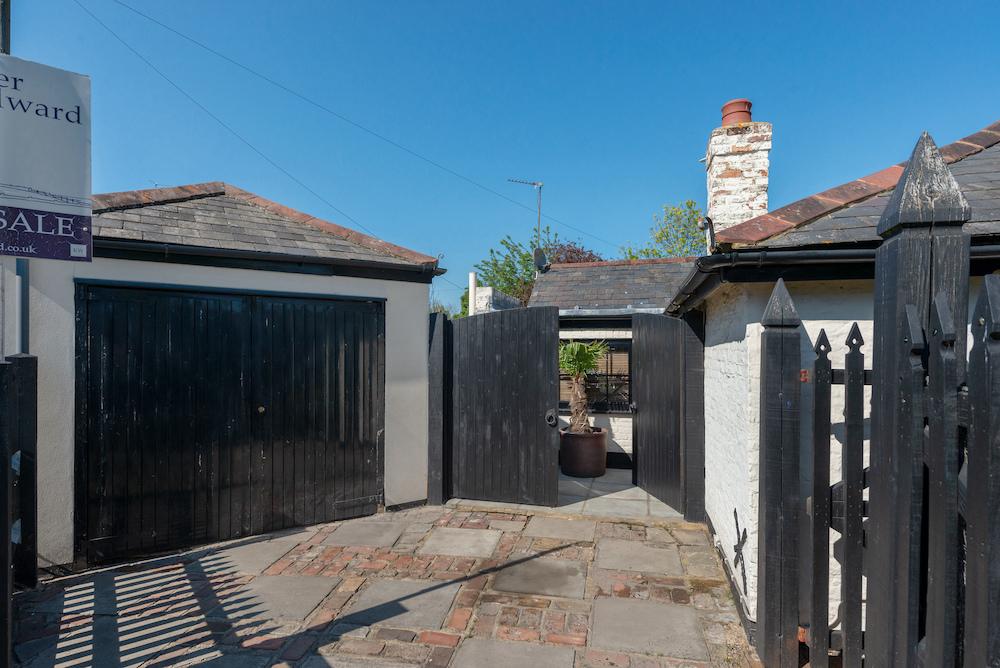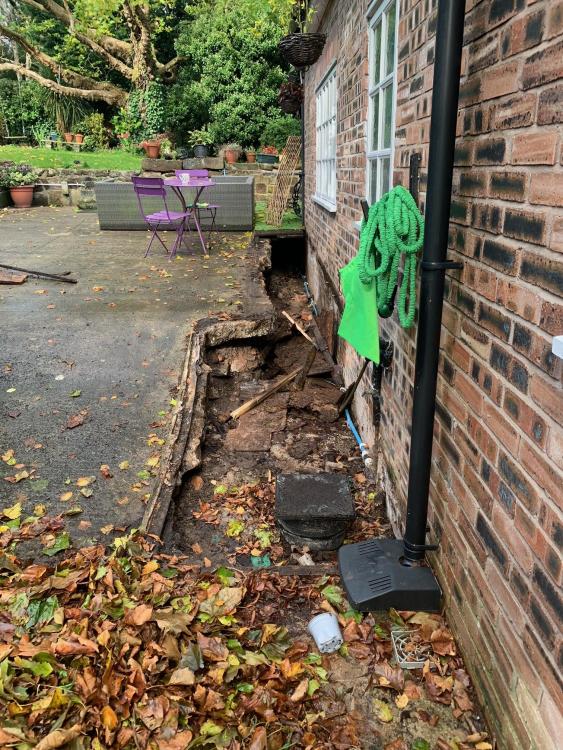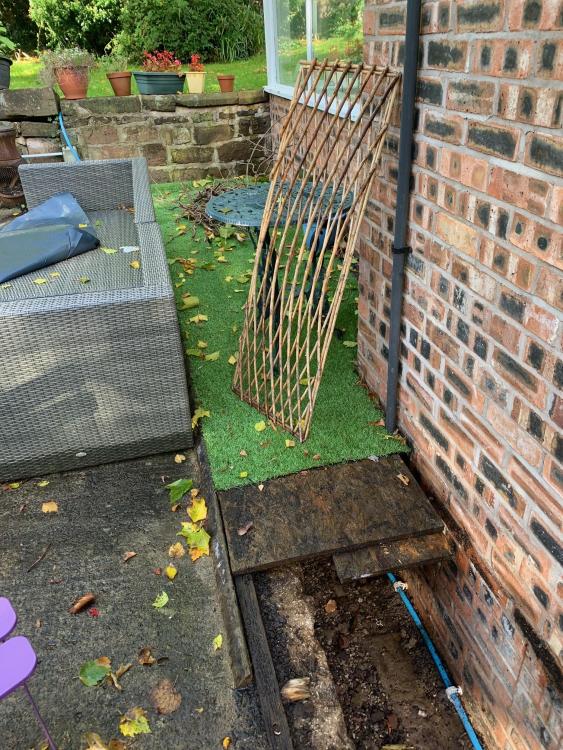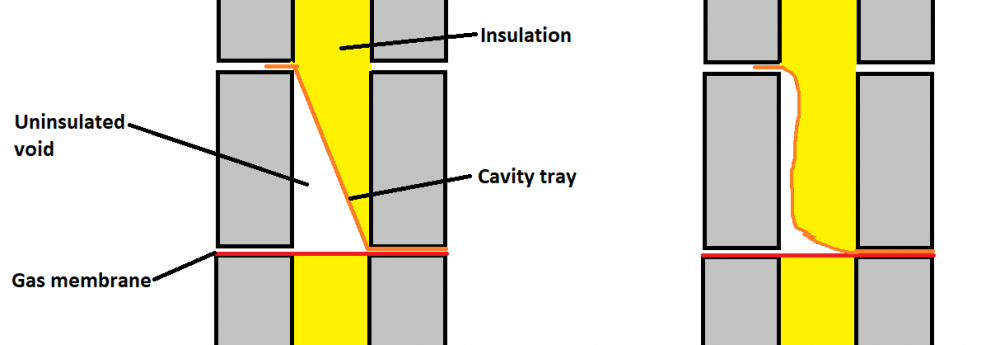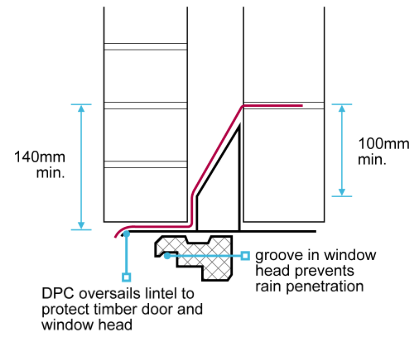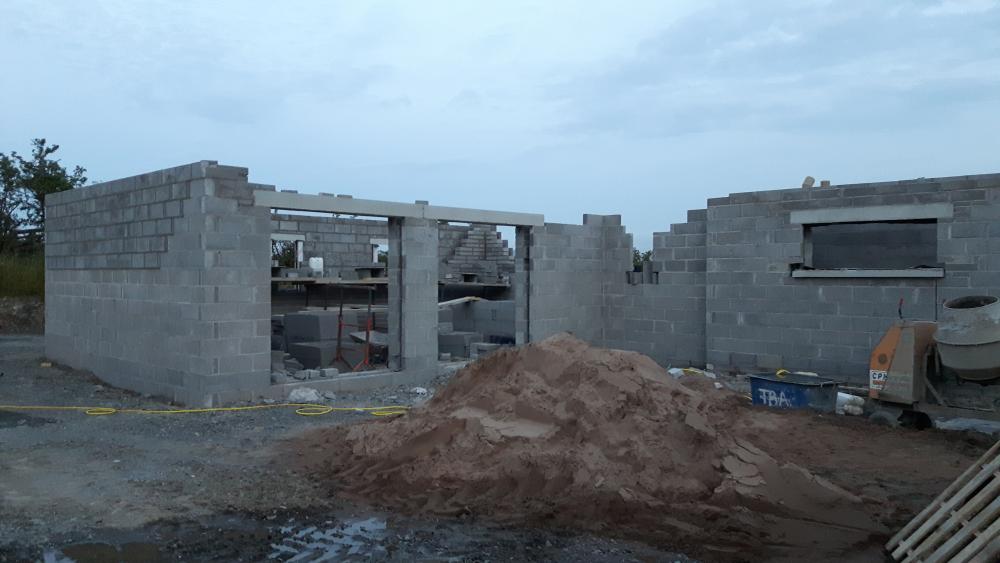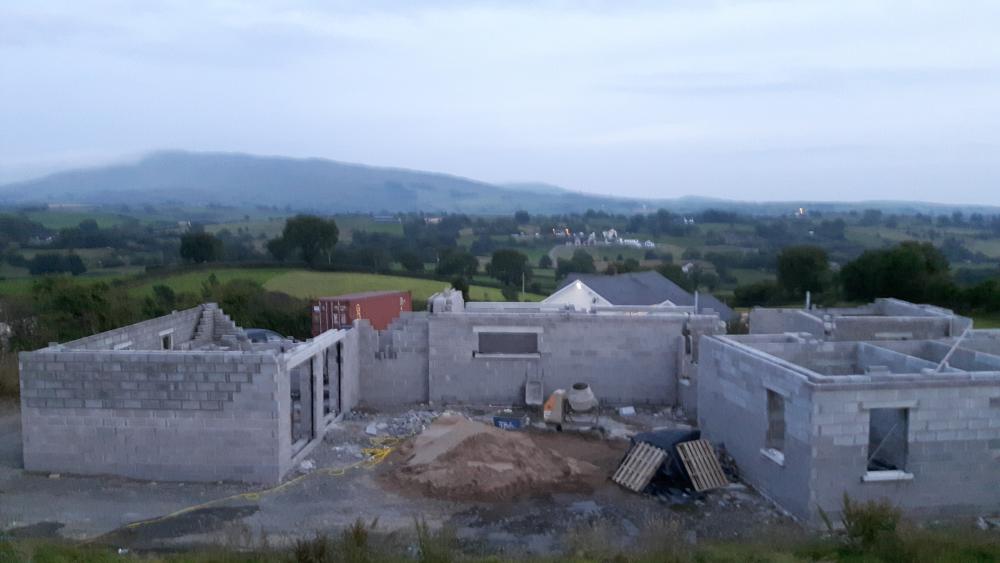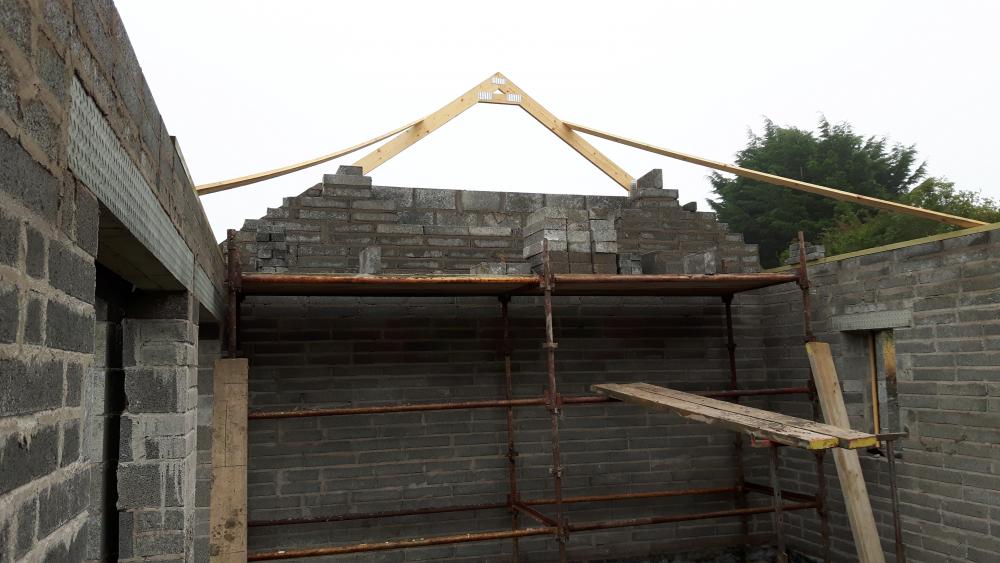Search the Community
Showing results for tags 'dpc'.
-
I'm just about at dpc level on an extension and am finding the garage opening to be perplexing. At the moment there is a row of trench blocks across the opening, house dpc/ffl being one block/225mm higher than the trench blocks. The ffl Of the garage Is going to be 100mm less with a makeup of. Blinding/ dpm/ 100mm insulation/ 150mm concrete. Is there a standard way to detail the opening threshold? I was thinking along the lines of insulation stops 150mm short of perimeter and the concrete is formed in front of it? With a taper away from garage? But i feel I'm missing something.
-
Hi, Im after some advice please! Were having an extension at the rear of a mid-terraced house, I want to run a water pipe from the old outside tap to the back of the extention to create a new one. The floor it will run across is block and beam, the builder has said that he wants the pipe under the insulation on the block and beam floor rather than in the screed so it will run under the DPC and will need to come back up through it. I can do the pipe work etc my question is around penetrating the DPC as I want to chase the pipe into the wall on the inside so the plasterboard can be laid flat to the wall. Should I run the pipe on the outside of the DPC and then into the wall or chase into the wall below the DPC and then reseal the DPC with either silicone or a cut off of DPC?? How will this affect building regulations if I break the DPC? Iv attached a pic so hopefully what im saying makes sense! If you have questions please ask! TIA :)
-
Hi Build Hub, Carrying out a rear extension on our detached 1960's house in Surrey. In need of a bit of advice or guidance regarding the possible need for damp proofing to an existing external wall that now becomes an internal wall after an extension. I plan to keep it as exposed brickwork as attached visual. The problem (or maybe it's not a problem) I have is the new extension lower floor level (blue line) is a lot lower then the existing DPC (pink line). Is there a chance moisture will run up that external wall and create damp issues? If so, what would be my best course of action? Do I treat it like a basement and tank the wall? Hoping that all made sense. Many thanks in advance.
-
- external wall
- internal wall
-
(and 1 more)
Tagged with:
-
Hi all. Bit of a unusual situation it seems when planning a patio, maybe someone can help: Bought a 1970s house 2 years ago that had an extension in 1975 and later a large interior redesign which included moving the rear doorway in the rear single story cavity wall. No damp problems in the house. Picture 1: The area highlighted in green are the DPC levels. Left was the extension, middle was where old door was moved from, right is original. Total width of rear wall is ~5125mm. Picture 2: An isometric view of the recent patio design so far + polycarbonate canopy idea (Unfinished design, but refining it). We had to rebuild a soakaway because the previous failed (No membrane around a stone filled pit near house. It's now 1.2m3 about 5m from house), so we also opted to excavate for a patio while removing several tones of buried construction/refurb waste left behind. The DPC levels vary wildly across the back, but to make matters worse it's only 35mm higher than the concrete side path on the right side AND it's the absolute minimum height above of only 3 brick courses above the foundation on the right third (allowing 225mm cavity clearance for building regs). Furthermore the garden slopes upwards from the house (were adding a french drain at between the patio/garden in case), so higher patio would be prefered. Patio will slope away from house. The foundation extends about 150mm away from the wall. This all makes it tricky to get any kind of drainage channel or slope in there. We believe the foundations are so wide/deep because clay soil around here. This means a patio almost can't be 150mm below the DPC all the way as it would be cemented to the foundation creating a non-draining area, while also being below all surrounding area. We are very strongly considering a lean-to canopy over almost all the rear wall to remove most of the water getting on the area near the wall (piped directly to soakaway). We would leave a ~100mm air/stone-filled gap to the wall and either pipework, membrane wrapped stone (then topped), or proprietary solution to ensure the small amount of water can drain to the ground under the patio subbase. Among the options we were considering (left side to right): A) 150mm Below door DPC on left, slight slope to level with DPC/concrete on the right corner. B) 150mm Below door DPC on left, step in middle to 75mm below DPC on the right, small step up to side path. C) ~85mm Below door DPC on left, step in middle to level with DPC/concrete on the right D) ~85mm Below door DPC on left, NO step in middle, ~75mm ABOVE DPC on the right. ~100mm step down to side path. None are ideal, but our prefered solution is D with Canopy + 100mm air gap + solid provisions to ensure the gap (between house/patio) drains to soil below patio (i.e. so it doesn't just become a solid water collecting channel on foundation). I don't believe enough water would collect there to warrant a full drain system piped to soakaway nor could it cause any damp issues given even more draining than existing was, despite being above dpc 100mm away. How would you deal with the combined DPC and foundation issue for this patio? or thoughts?
-
I've decided to use this fake-lead roofing product to protect the edge-insulation of my raft foundation. A convenient place to fix the fake-lead at the top is to the 50mm-timber soul-plate at the base of my timber frame. However, it occurred to me that the the sole plate is above the DPC. Would I be bypassing the DPC by doing this? Is this a big "No No" 😱? (I could just add a length of DPM behind the fake-lead just in case.) The fake lead is a Ubbink product (Ubiflex) …
-
Hi I know from the Beam and Block plans that DPM needs to be placed under the concrete beams on the ground floor. From YouTube videos I thought DPM is placed on a 10mm mortar bed. However, a subcontractor has suggested you don't have to put 10mm mortar bed under DPM. Is this true? What which be better, with or without the 10mm bed? Thanks
-
We have a detached garage which we are looking to convert to living accommodation. Whilst trenching for utilities we noticed that the damp proof course has been bridged by the concrete slab. Just wondering, should I be concerned about this? What could I do to remediate? Do I need to dig out the slab, excavate and re-lay or is there a simpler/cheaper option? Original plan was to follow this up to the screed layer. Is this still applicable or do I need to deal with the bridged DPC first?
-
HI there. I've bought a house which is an Edwardian terrace with a cellar. The rear is a full storey higher ground than the front, due to being on a large hill. COnsequently there's a lot of groundwater moving through the general area and the back of the house is quite damp. The rear room has no cellar below and has a suspended timber floor. I took the floor up in the dampest corner and found a few potential issues. There was almost no sub-floor ventilation as it's full of rubble with one air brick and seemingly no through ventilation to the cellar. But also, there is a clear DPC running about half a brick below the height of the external concreted floor. I've had a surveyor and a structural engineer for various reasons take a look at the place and neither of them seemed that fussed about the DPC being below ground level, but from my research that's a clear and likely source of damp ingress. We run a dehumidifer constantly to see if it will dry out with the boards up and although it keeps the damp smell at bay, the water keeps coming and the dehumidifier fills its reservoir daily. In order to try and improve things I'll be taking out a load of rubble and making a good cross-ventilated sub-floor, but am I fighting a losing battle if I don't sort out the ground level? I have two walls both external in that room and both are raised above the DPC. One was done by the previous owners and one is sadly a shared passage between houses that was renovated by the neighbour without gaining consent.
- 4 replies
-
- damp proofing
- dpc
-
(and 1 more)
Tagged with:
-
A recent damp and timber survey discovered raised external ground levels which are one of the things causing damp walls inside the house. Please note this house was built in 1810 and has no DPC. The surveyor suggests the following: Form a trench at the wall/path junction to a depth of 150mm below the physical damp proof course or internal floor level and fitting Aco drainage or similar, discharging into suitable drainage or back filling with pea gravel to allow drainage of rainwater. Any gravel filled trench should incorporate a suitable membrane against the wall surface and drainage so that water does not pool within the trench, which over time would penetrate to the full thickness of the wall contributing to internal dampness. Guidance on how to install such a membrane and drainage can be obtained from manufactures websites. A couple of questions: I am leaning towards a French drain because it has more flexibility for getting around potential obstacles, is less permanent if things go wrong (rip it out and replace etc), and does not need to be physically fixed in place introducing more impermeable substances into the area with damp. Is this logic sound or am I missing something? Does anyone have an idea of what sort of membrane he may be suggesting? I can follow up with him but just wanted an opinion on here Given the age of the property and it's construction am I missing a trick where something else would be preferable? A few pics for reference attached
- 10 replies
-
Hi. We have just moved in so are now rectifying all the random things that were done to the house by the previous owner. One of these was to cover the construction trench around the extension of the house with wood topped with astro turf. Presumeably it was done to make it look neater for when the house was up for sale. The wood is all rotten and it touches the house above the damp course. I am half way through ripping it out. What are my options with this trench as it is pretty unsightly and there is the possibility of falling in it! One of my thoughts was to put loose bricks in the botton, then a layer of gravel then a layer of something decorative (i.e. pebbles). This would mean the stones would be touching the wall above the damp proof course. Would this be a problem? thanks.
-
Cavity trays made using DPC roll are often shown simplistically crossing the cavity at an angle from their top on the inner leaf to bottom on the outer leaf. In reality, even if you try to run the DPC material down the inner leaf before crossing the cavity, you will still create a void behind the cavity tray that will end up uninsulated: Is there a way to insulate this void or is it a matter of trying to keep it as small as possible? Preformed corners and stop ends all seem to adopt the shape on the left and so will create quite a significant cold bridge. I'm using blown bead insulation. There is no route for the beads to get between the gas membrane and cavity tray. Also I wouldn't want the pressure of the bead blowing to dislodge the cavity tray.
- 8 replies
-
- cavity insulation
- dpc
-
(and 1 more)
Tagged with:
-
We're using Thermabeam rather than beam and block, but the compressive load under the supports will be similar. As there are concentrated loads, do I need to use a specific type of DPC? What DPC do people use for beam & block beams to bear directly on?
-
The NHBC guidance documents show the outer edge of the cavity tray DPC going past the edge of the lintel (see below). I've not noticed this done and have seen it trimmed back from the edge, for example this video. What did people do themselves here? I'm not sure which presents the greater risk of capillary action drawing water into the cavity under the DPC of the cavity tray?
-
Could someone advise me on the correct procedure for overlapping the dpc on my extension. The house dpc is one brick below floor level. 1- Do I / can I, use 300mm dpc as a cavity tray from the extension floor level down to match the house dpc level (one brick) if so how many weep holes should I provide ? 2- how do I tie this in with the house dpc, do I need to chase very far in to overlap extension dpc and house dpc? 3- How should I approach the virtical dpc/starter kit, how far in should I chase the wall etc. Many thanks in advance! I can post pictures if necessary.
-
So it seems I have missed the fine detail on my vehicle garage doors. Brickies have constructed the reveal with a cavity and closed it by returning block with insulation strip and dpc in the same manner as a window. The other day I was gazing in thought at the house and realised the sectional garage doors will be fixed internally to the inside blockwork skin. What then would I do with the reveal:- - leave as is and plaster over to internal skin (door face) with the dpc in place. Would dpc still be effective? - remove insulation and dpc and close cavity completely with block, what then do I do for dpc to stop damp spread internally with a 215 mm internal leaf. Some pics to help hopefully. Thanks in advance.
- 10 replies
-
Just about to build the wall connecting our house to the piggery. The wall has a full-on foundation, piles and all (for which there is no need, but thats another story) This is the junction between the house and the wall. You can see the DPC and radon barrier in the house. The wall hasn't been poured yet. (empty Durisol blocks) You can see the EPS300 butting up to the Durisol block. There's a 100mm + gap to make up the wall to the house DPC level. As it's a garden wall, there's no need for the horizontal DPC is there....? But should I run some DPC vertically between the house and the garden wall?
- 16 replies
-
So I have a timber frame with an outer block and render skin. Our external finished ground is going to be level with the slab (including channel drains at every opening). MBC have installed their DPC under the sole plate and lapped it down to the ring beam that supports the blockwork (see image below). I think I've gleaned that standard practice is then to add a second DPC 100-150mm above the external ground level and lap it down onto the frame DPC. Does that sound right? However, where I'm confused is where to put the weep vents? If they go at the bottom then they will be blocked by the external ground. If they go at the higher level then the lower section could just fill up with water. I'm beginning to to think I've got this detail all wrong?
-
A bit of a spinoff from my other thread. I am replacing a back galley kitchen in a 1900 terrace house due to damp over a decade having stained the back of 2 base units. Date is approx 1960-1970 (based on different bricks from house and knowing when my local council did grants), so probably a mix of solid wall and cavity. The plan is to strip out the kitchen, and do some protection against what I expect to be rising damp ni the walls. I can see 2 options: 1 - Strip plaster at bottom and Inject DPC. 2 - Do not strip plaster, and attempt to seal with eg "Damp Seal". My inclination is to do both 1 and 2, but I will not have the option of leaving the walls exposed inside for more than 24 hours to dry out as it has tenants in situ. I get a clear week to work but more will be awkward. Potential problems: 1 - One wall is external, one is party. Are there difficulties injectnig a DPC into a party wall? Do I need to do a PWA notice etc? 2 - I would like to insulate the external wall as much as is practical, but what is the method? I reckon I can lose only perhaps 25-30mm off the kitchen width, and I really don't want to take it all back to brick even on one side. Can I bond PIR or PUR backed plasterboard directly to the existing plaster? Any comments are welcome. Ferdinand (Aside: may be off line for a bit due to antipodean holiday, or may check in if the marsupials are boring).

